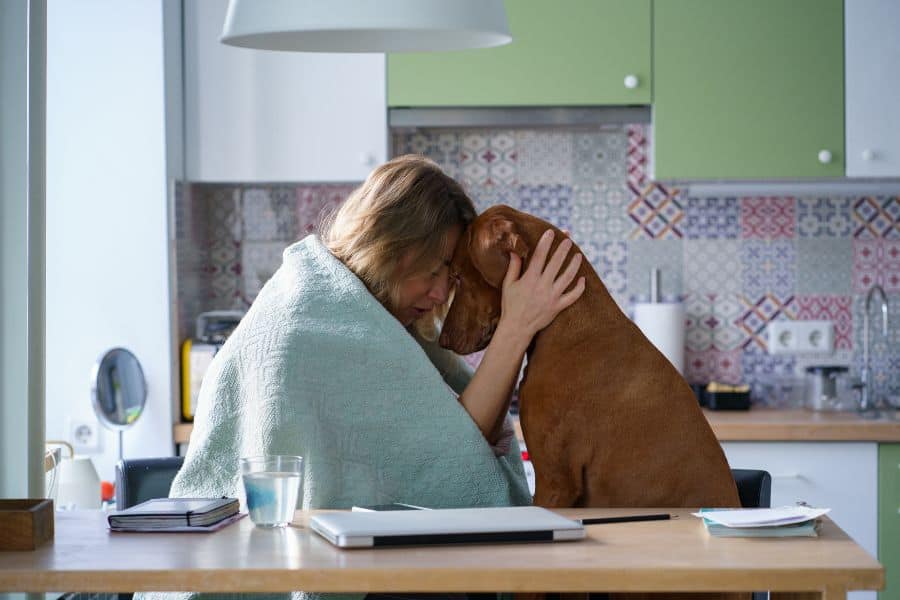Recognizing Stress In Your Pet
Much like humans, pets are in danger of being affected by stress. As responsible pet owners, we must keep an eye on our pets to see if they are experiencing signs of stress and unease. Is your pet acting unusual? Do they seem anxious or depressed? Then stress could be the cause of their behavior. Experiencing stress could cause health complications in your pet and lead to more significant problems in time. Recognizing stress in your pet can improve their overall health. Here are some signs to look out for that can indicate stress in your pet.
Tucked Tail
A tucked tail is one of the most common signs of an unsure and stressed pet. This sign is also the easiest to spot as our pets likely have their tails up and wagging when they are happy with us. We all recognize a tucked tail as a sign of an unhappy dog, but a dog has multiple other ways of showing that it’s uncomfortable – some of you might not be familiar with. Be sure to watch your pet’s tail as you see them react to certain things and situations. This can teach you what your pet should avoid.
Avoiding Eye Contact
Eye contact is a sign of confidence and certainty. A stressed pet will avoid eye contact and isolate itself from other pets or people. This behavior is a little harder to observe, especially if many other things are happening, so finding your pet alone under a table strongly indicates they are uncomfortable. An increase in drool, shedding or grooming, and paw sweat are also all indicators of an anxious and stressed-out pet. Drooling without any food around is a cause for concern. Also, be cautious as you brush your pet, as they might let out more fur than usual if stressed.

Loss of Appetite
Pets don’t go on diets as people do, so if your pet suddenly loses interest in food or stops eating altogether, it could be a sign of anxiety or stress. Pets need to get their energy and nutrients from food, so when they stop eating, you should keep a more careful eye on your pet as they could have some underlying issues and anxieties that you can’t see.
Additional Signs
Additional signs of stress include a change in sleep schedule and aggression toward their surroundings. Pets with a lot on their mind will be more reactive and have trouble sleeping. A tired pet will be a cranky pet. Cats can also show that they are stressed by urinating outside the litterbox. This is how your cat communicates that something is wrong, so you should take the time to observe what could be bothering them. It’s important not to get angry with them or yell as it does not help the situation.
Stay Alert and Observant
When it comes to your pets, always be alert. If any signs occur, consult a veterinarian to get the answers to your questions to ensure your pet is living the happiest and most peaceful life possible. This Fall, TOP TAILS is the perfect Pet Sitter! It can be hard to ensure that your pet is receiving the exercise and care they need during the autumn months, especially with the kids returning to school and our work schedules ramping back up. But with TOP TAILS Pet Sitting, you can be sure that your furry friend is getting the best care and attention during the day while also ensuring they are happy and healthy in the fall.
